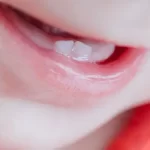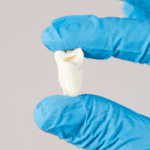In a person’s lifetime, they typically get two sets of teeth: 20 primary or deciduous teeth (commonly known as baby teeth) and 32 permanent teeth that replace them; however, some people end up having more teeth than expected. This is known as hyperdontia.
If you have been dealing with extra teeth, you may want to learn some facts, especially when it calls for immediate dental care. If you are wondering, “what is hyperdontia?” — here’s everything you need to know about this condition.
Hyperdontia
Hyperdontia occurs when a person has extra teeth growing in their mouth. These excess teeth – also known as “supernumerary” teeth – can grow anywhere in your dental arches, or the curved areas where your teeth attach to your jaw.
Extra teeth can either be impacted (not broken through the gum) or visible (erupted). They often go unnoticed in children as they tend to look normally aligned with the rest.
This condition is not usually painful, but hyperdontia pain and swelling can occur as a result of complications.
Prevalence
Although these extra teeth can occur for both your deciduous and permanent teeth, it is more common in permanent teeth (0.1% to 3.8%) compared to baby teeth (0.3% to 0.6%).
Furthermore, hyperdontia in permanent teeth is two times more common in males than females. When it comes to cases of extreme hyperdontia, there have been reports of more than 30 supernumerary teeth in one person, but these large numbers are rare.
Causes of Hyperdontia
The exact hyperdontia causes are still unknown; however, this condition may be linked to environmental or genetic factors. The latter consists of an autosomal superior trait with low penetration (as sometimes supernumerary teeth result from a mutated gene), while environmental factors involve the overactivity of the dental lamina — which is the zone of cells that initiates the tooth germ’s formation — during tooth development.
It is believed that real hyperdontia is associated with the following hereditary conditions:
1. Gardner Syndrome
This is a rare genetic disorder that increases the likelihood of tumors. It causes the formation of benign growths in various areas and leads to skin cysts, colon growths, and skull growth. People who suffer from this condition have a higher risk of developing colon cancer.
2. Ehler-Danlos Syndrome
This inherited disease inflicts: loose joints that easily get dislocated, painful muscles and joints, easily bruised skin, and scoliosis.
3. Fabry Disease
This syndrome involves a deficiency of the enzyme alpha-galactosidase A, which causes: an inability to sweat, red or blue skin rashes, abdominal pain, as well as painful hands and feet. It affects several areas, including the skin and teeth. This rare condition causes the body to be unable to make an enzyme break down fatty substances.
4. Cleft Palate and Lip
This birth defect causes an opening in the upper lip’s roof, which occurs when the baby’s mouth is not correctly formed in the uterus. As a congenital irregularity, it results in trouble speaking or eating and ear infections.
5. Cleidocranial Dysplasia
This very rare condition runs in families and results in the abnormal growth of the skull and collarbone.
Types and Symptoms of Hyperdontia
Hyperdontia’s main symptom involves a growth of surplus teeth behind or near your typical baby or permanent teeth. The extra teeth are categorized based on their shape and location.
When it comes to shape, these extra teeth are classified according to the following:
- Supplemental: A tooth that is of similar shape to its closest tooth.
- Tuberculate: A tube or barrel-like shaped tooth.
- Conical/Peg-Shaped: A tooth with a wide base, narrowing at the tip, forming a sharp appearance.
- Compound Odontoma: A tooth that is composed of many small, tooth-like tissues developed near each other.
- Complex Odontoma: In contrast to a lone tooth, the tooth-like tissue develops in a disarranged group.
When teeth form throughout the mouth, a dentist may classify hyperdontia as follows:
- Mesiodens: An extra tooth that grows in between the two flat, front teeth of the upper jaw — also known as central maxillary incisors. This is the most common type.
- Paramolars: A tooth that grows next to the molars.
- Distomolar: An additional tooth growing behind the rest of the molars.
Treatment of Hyperdontia
If you’re troubled by the thought, “can hyperdontia teeth be removed?” — the good news is that, although there are only a few ways to treat hyperdontia based on your age and the number of extra teeth, they can, and the most common method is by extraction.
Note that it is always best to talk to your dentist when you have hyperdontia, especially if any pain, discomfort, swelling, or weakness is present.
That said, your doctor will also likely suggest removing extra teeth if you:
- Cannot chew properly
- Have an underlying genetic condition that causes hyperdontia
- Have a difficult time brushing or flossing your teeth
- Feel self-conscious
Given the possible cosmetic and functional problems that come with this condition, it is important to detect, evaluate, and treat it at the soonest possible time. Neglecting it may lead to more serious dental problems, like tooth decay, oral cysts, and gum disease.
Schedule a Consultation
Hyperdontia calls for immediate attention. If you have this condition and would like to learn more about your treatment options, we can connect you to the best dentist in the practice. At Advanced Dental Group, we are affiliated with the most qualified dental professionals to take care of your oral health care needs. For more information and appointments, call us today!





